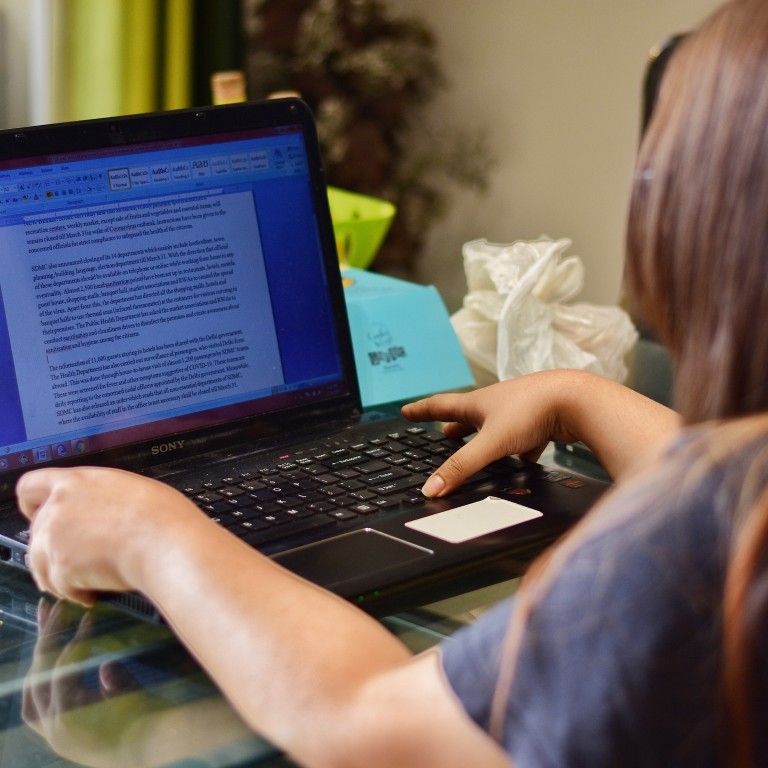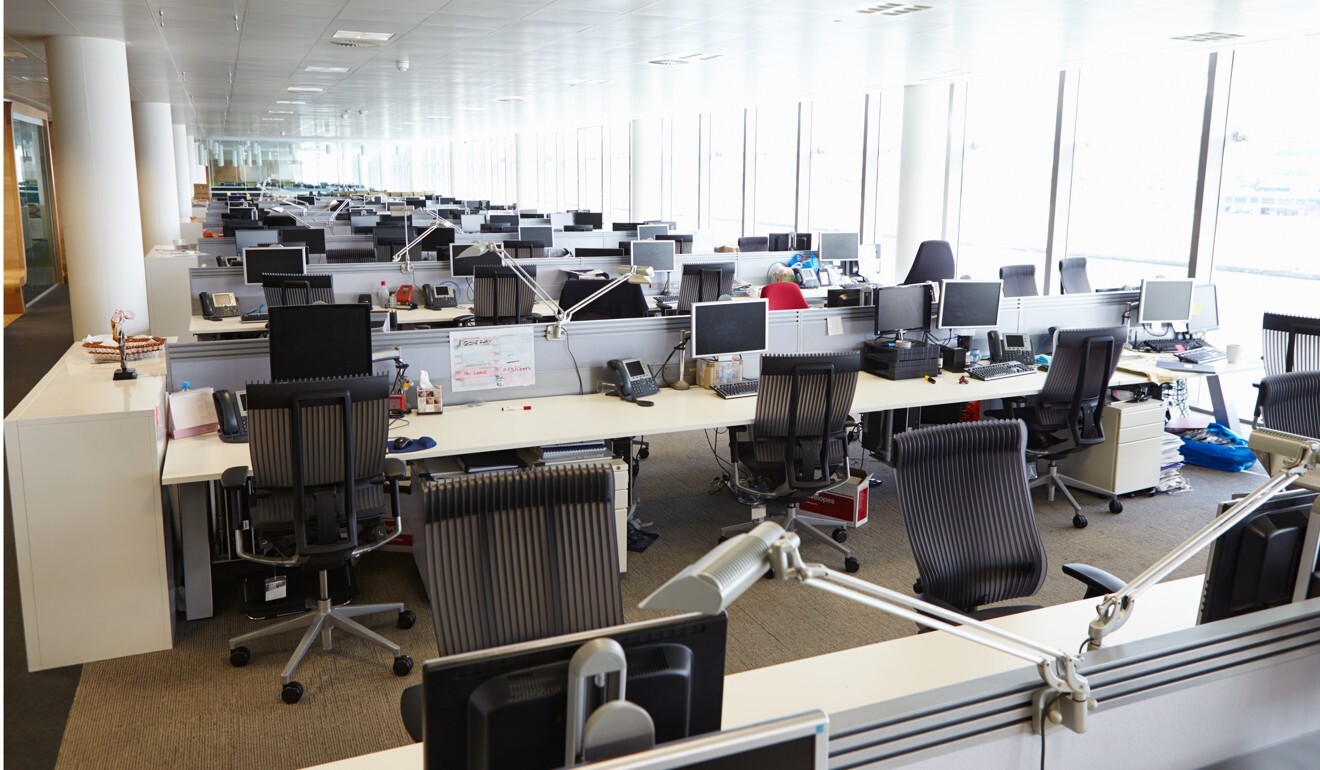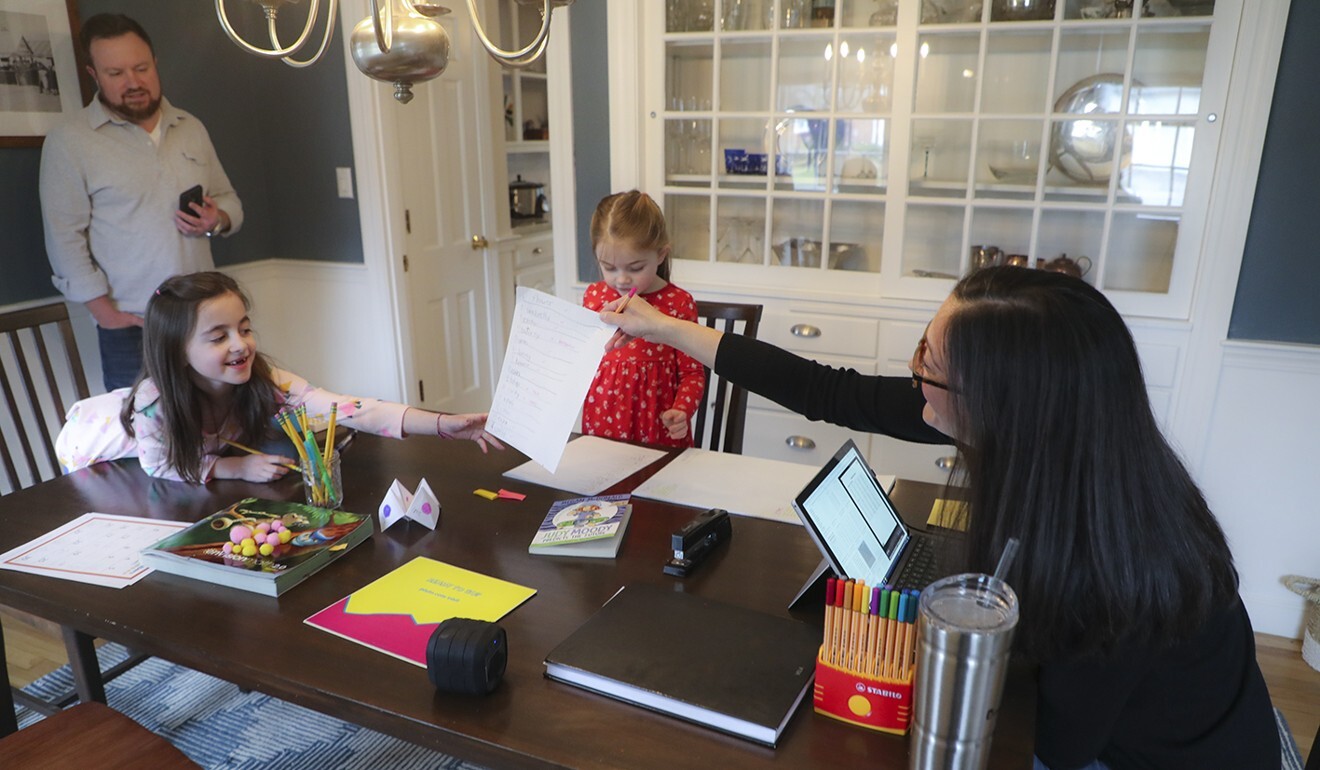
Work from home revolution has begun thanks to coronavirus, as remote staff maintain productivity and efficiency
- The coronavirus pandemic has forced a trial run of remote working, and employers and their staff have found it doesn’t have the downsides some expected
- Many companies could continue to have some staff work from home after the health crisis, allowing them to cut costs and spend less on renting office space
Around the world, as people yearn for a “return to normal”, many are already recognising that some things will never be the same – and that might be a good thing.
“Covid-19 has been the catalyst to prove that working from home is an effective option. The outbreak shows that changes can be made to the traditional model of working,” says Kirti Lad, executive director of Meraki Executive Search & Consulting, based in Hong Kong.

“We can learn from this in how we do our meetings and bring to life our slides and presentations,” says Lad.

Hong Kong companies – local entities rather than multinationals – are known for having an old-school, bums-on-seats culture. The assumption is that employees are only working if they are in the office where the boss can see them. This culture of presenteeism, says Lad, has held the city back.
“The attitude in Hong Kong for many years has been that [remote working] isn’t possible, there are concerns about absenteeism,” she adds. “Now, companies have been forced to chuck the rule book out the window and make things work.”
Tim Huxley, chairman of Hong Kong-based Mandarin Shipping, has never been a fan of remote working. He believes the communication and interaction afforded by open-plan offices lead to ideas people probably wouldn’t come up with in isolation, but the experience of the last couple of months has softened his stance.

“We realise that we can work more efficiently, that we can get the work that needs to be done, done in a more productive timescale. We’ve realised you don’t need to be in the office from 9am to 6pm, or until the boss leaves,” Huxley says.
His view reflects that of a recent survey by global research and advisory firm Gartner, which found that 74 per cent of chief financial officers expect to move at least five per cent of previously on-site employees to remote positions post-Covid-19.
“This data is an example of the lasting impact the current coronavirus crisis will have on the way companies do business,” says Alexander Bant, practice vice-president for research at Gartner.
The attitude in Hong Kong for many years has been that [remote working] isn’t possible, there are concerns about absenteeism. Now, companies have been forced to chuck the rule book out the window and make things work.”
“It galls me that the last six weeks we’ve been paying a fortune per square foot for something which is hardly used,” says Huxley, whose office is in the central Hong Kong district of Admiralty.
Moe Vela, chief transparency officer of TransparentBusiness, is based in New York, one of the world’s most expensive office rental markets after Hong Kong and a city taking a battering from the pandemic.

The US firm facilitates remote working with software that allows managers to easily monitor the work of employees, through screenshots and keystrokes. “The screenshots and the software are controlled by the employee, the objective is balanced accountability,” says Vela.
“In the short term, [landlords] will feel like they’ve lost, but they will get creative about how they use their space,” he adds.

Often, the people making decisions about whether their firm will allow for flexible work options have never tried it themselves. The lockdown has pushed them out of their comfort zones to try something new. It’s never a pleasant experience, but it can lead to change for the better.
Vela says firms that have been mandated to have a remote workforce have been relieved to discover that their primary concern – a decrease in productivity – has not been realised.
“That was the number one concern, the excuse,” he says. “Well, the excuse is gone. We find that productivity is increased, satisfaction is increased and employee turnover goes down. You have a healthier workforce with less absenteeism. And you can attract and retain top talent because this is what millennials want.”
For Lad, an interesting part of the lockdown process has been observing the response of leaders who are used to being physically close to their “troops”. A CEO would typically run town hall meetings, fill a large room with hundreds of people and give a motivational speech. They now need to rethink how they do things.

“Those that are going to be the stars who come through this are not necessarily the ones with the biggest jobs and job titles,” she says. “It will be the ones who are able to keep teams together and let people feel connected. The ones who are able to give the warmth people need at a time like this when it’s emotional and hard. There are so many things that everyone is having to deal with.”
There are dozens of remote team management tools and software programs to help ensure remote employees are on track and that assist them to reach their top performance levels.
But Lad isn’t convinced that monitoring employees’ computer time is the way to go. She believes that if employees want to give the appearance of working when they are not it’s easy to fool the software. She prefers to focus on creating an atmosphere of trust that will empower staff, but she insists they need to be held accountable for their output at the end of the day.
That was the number one concern, the excuse. Well, the excuse is gone. We find that productivity is increased, satisfaction is increased and employee turnover goes down.
“Trust is so important, especially now, when people are scared and anxious. Companies will figure out quickly if [staff] are on Facebook all day because they don’t have anything to show for those days at home,” says Lad, adding that managers need to look for ways to motivate and incentivise people.
Working from home can have pitfalls. A 2019 global study of 2,500 remote workers found that loneliness was the second most reported challenge (19 per cent), after difficulty of unplugging from work (22 per cent). Loneliness can make people feel less motivated and less productive. Vela recommends that remote workers schedule time for self-care during the day.
“This may mean working out in your day, exercising at home. It’s important to incorporate self-care,” he adds. “When you are alone too much, some people can feel isolated and that can create a level of anxiety.”
No one is suggesting a move towards an entirely remote workforce. The last couple of months have proved there are drawbacks to working from home, including the potential lack of human contact.

“We can’t have an organisation where 100 per cent of people are working from home. People still need to see each other and create bonds and person-to-person connections,” says Lad. “But companies can begin asking these questions and thinking about costing savings and how to reduce their real estate footprint.”
Vela sees a gradual transition towards a more remote workforce, with 15 to 40 per cent of employees remaining as remote workers post-pandemic.
“For that to happen,” he says, “both management and employees have to do it right in this time period using the tools and solutions that are already available to keep mutual trust and loyalty with management.”

